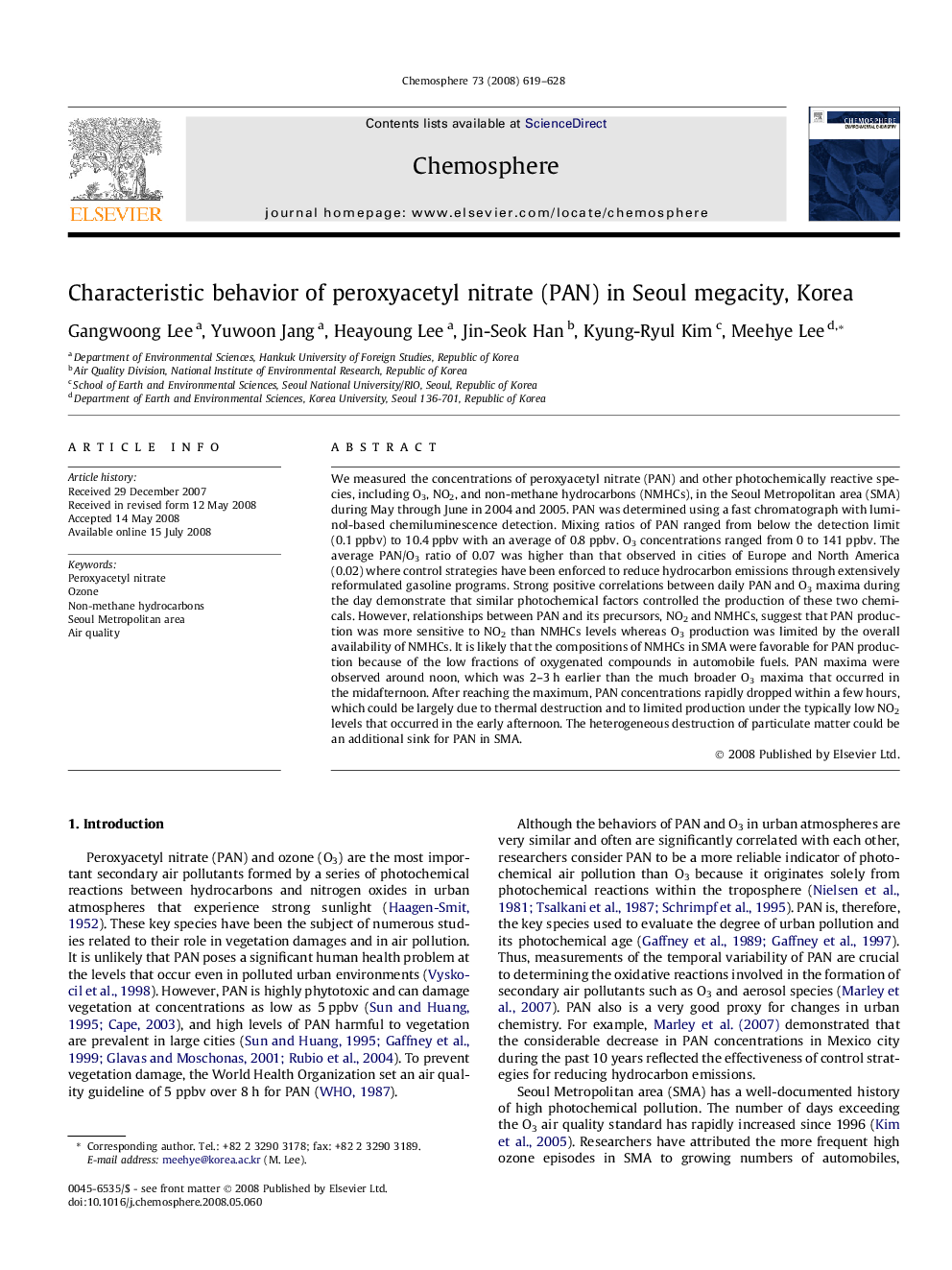| Article ID | Journal | Published Year | Pages | File Type |
|---|---|---|---|---|
| 4413334 | Chemosphere | 2008 | 10 Pages |
We measured the concentrations of peroxyacetyl nitrate (PAN) and other photochemically reactive species, including O3, NO2, and non-methane hydrocarbons (NMHCs), in the Seoul Metropolitan area (SMA) during May through June in 2004 and 2005. PAN was determined using a fast chromatograph with luminol-based chemiluminescence detection. Mixing ratios of PAN ranged from below the detection limit (0.1 ppbv) to 10.4 ppbv with an average of 0.8 ppbv. O3 concentrations ranged from 0 to 141 ppbv. The average PAN/O3 ratio of 0.07 was higher than that observed in cities of Europe and North America (0.02) where control strategies have been enforced to reduce hydrocarbon emissions through extensively reformulated gasoline programs. Strong positive correlations between daily PAN and O3 maxima during the day demonstrate that similar photochemical factors controlled the production of these two chemicals. However, relationships between PAN and its precursors, NO2 and NMHCs, suggest that PAN production was more sensitive to NO2 than NMHCs levels whereas O3 production was limited by the overall availability of NMHCs. It is likely that the compositions of NMHCs in SMA were favorable for PAN production because of the low fractions of oxygenated compounds in automobile fuels. PAN maxima were observed around noon, which was 2–3 h earlier than the much broader O3 maxima that occurred in the midafternoon. After reaching the maximum, PAN concentrations rapidly dropped within a few hours, which could be largely due to thermal destruction and to limited production under the typically low NO2 levels that occurred in the early afternoon. The heterogeneous destruction of particulate matter could be an additional sink for PAN in SMA.
